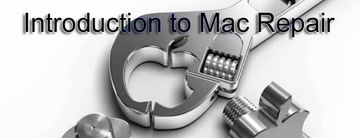Read previous part: Introduction to Mac Repair 3 - Advanced Maintenance Options
The final part of Eli’s class on Mac Repair includes a description and precautions related to System Preferences and network settings on Mac computers.
So we may exit that menu and go back to Applications tab, to its part called System Preferences as shown on Screenshot 20.

Screenshot 20. Mac System Preferences menu
There are a lot of System Preferences to mess with, one may click on General to see Appearance, Highlight Color, all of that. We go over to Desktop so that we can change screen saver. It also gives you the ability to do things like changing the Dock, which is this bottom part here on the Mac desktop. So, if I want to make Dock small, I just scroll to make it small, if I want to make these icons big, scroll to make these big. I can do various modifications there, too.
One of the things that, when modifying the settings you need to remember, is Mac does not have Apply button. It applies everything basically in real time, so if you make any modifications, make sure you remember what you have done, for it’s not always easy to go back.
There are things like Dock, Language & Text, Security & Privacy – all that kind of stuff; Mouse, Energy Saver so that computer is turning off randomly, this may be a problem for you. All of these settings are here in System Preferences menu as Screenshot 20 illustrates.
The main setting to worry about when you are first learning to fix Mac is Network Settings. This is really the one that comes around and you have to deal with it, because you need to get Mac computer to the networks, and users being users, there is one thing they like to fault with, they like to fault with TCP/IP presets.
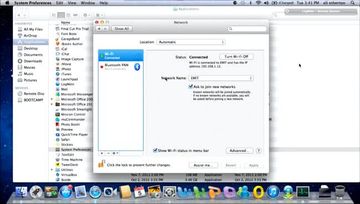
Screenshot 21. Mac System Preferences menu, Network tab
So, you need to go to Network tab of System Preferences menu (see Screenshots 20, 21). There is Wi-Fi Connected in this example as Screenshot 22 shows. It also shows the network connected is EMIT in the Network Name part, and we can see the Wi-Fi is on in Status line.
So here you may fix problems with Wi-Fi, if it is turned off – you need to make sure it is turned on in the Status field.
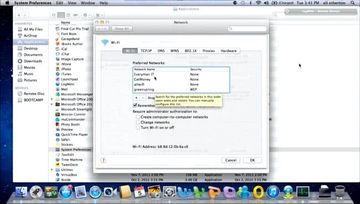
Screenshot 22. Mac System Preferences menu, Network tab, Advanced
To deal with TCP/IP settings, go to Advanced button at the bottom left of this menu as shown in Screenshot 21. Here you can make further modifications (see Screenshot 22). All the networks are here, and it shows what network is preferred. Now, we need to go over to TCP/IP in the upper menu of Advanced tab. This will generate a tab as shown on Screenshot 23.
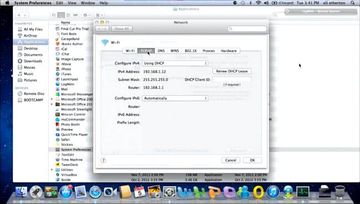
Screenshot 23. Mac System Preferences menu, Network tab, Advanced, TCP/IP
Right now, as you can see on Screenshot 23, this is set to using DHCP. I can go and manually change this to Manual IP Address or leave it as it is. If you change it to Manual IP address, you can go here to DNS tab and add DNS server (see Screenshot 24). You can add as many as you like.
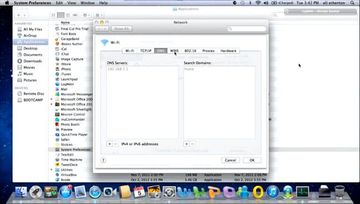
Screenshot 24. Mac System Preferences menu, Network tab, Advanced, DNS
There is also WINS for those still using WINS, other stuff, and the thing you guys love, Proxy Servers (Screenshot 25). Here you can actually set up a proxy server, if you want to use one for security or to bypass.
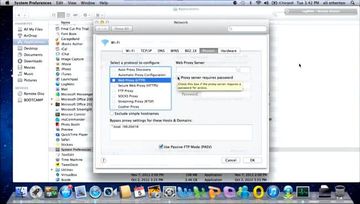
Screenshot 25. Mac System Preferences menu, Network tab, Advanced, Proxies
If you are on the Mac, this is where you would go to set those proxy servers.
So, that is really all about Mac computers, they are really very, very simple. Basically, when it comes to Mac computer, you do not want to overcomplicate it.
For many people the biggest problem about Mac is that they think Macs are as difficult as Windows computers. So, they come here and look for more complicated stuff, whereas it is really honestly not complicated. The only last thing that you may want to look at is at the right-hand corner of Mac desktop, which shows whether you are connected to the network (see Screenshot 26), whether your battery condition is retiring, your User Name, and so on and so forth.
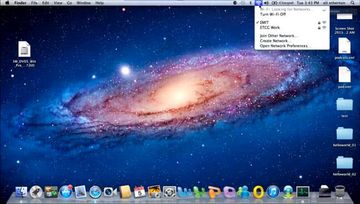
Screenshot 26. Mac quick informer
But that is really all that relates to Mac repair.
You can make it much easier than that. A lot of people are worried about repairing Macs when they do not really have to.
Repairing Macs is simple, but this can be tedious as hell. An important thing to remember on Macs is that, in general, if there is a problem, it is a hardware problem: hard drive dies, the screen dies, etc.
One thing that I am to warn you about is – and this is a very serious warning, so please consider it as a special notification by Eli – one of the problems you run into as you are going to buy parts for Mac computer on the open market is sometimes they will sell you technically a right part, but even when you get it, it will be unusable for you.
The problem is, especially with some MacBook areas, some of its parts are very thin, for example the screen. The issue is that if somebody drops something on the screen and breaks it, and you go to replace the screen, to buy and replace it, basically you may run into “legitimate fraud”. The reason is that if you go out and all you do is you buy LCD, screen itself – that will cost you, say, 150 dollars. The problem is that all you do is you have bought a screen, but there is no way to disassemble this panel to actually replace a screen. You simply cannot do it as they fused this panel together.
So, you have bought a “replacement” screen that, in fact, cannot be replaced.
Look for proper guides on which parts to buy, and, in some cases, like in this under review, you have to buy this entire piece; the difference is that if you just try to replace the screen, you can buy a screen for 150 dollars, although you cannot actually replace it.
If you want to replace an entire component of the MacBook, its entire lid, it will cost you 700 dollars; that will be your costs, inexpensively. So, this is something you need to be extremely careful about, because a lot of people accidentally buy wrong parts. If you buy a wrong part for your client, your client is not going to pay for you.
That is one thing to remember especially when buying one of MacBook components.
Now, there is a true story, to give you an example. I was fixing a MacBook Pro. I accidentally bought a wrong year detail for the cover, the keyboard thing.
If you want to replace a keyboard, you actually have to replace the entire lid thing at once. So that cost me 300 dollars, which I paid out of my pocket. But as I went to replacement I found out that from the inside it was completely different, in spite of the fact that from the outside it looked the same.
Basically, I failed to return the part, so I lost USD 300 on that repair.
That is a big thing with the Macs, be careful with the hardware you buy. Buying the wrong hardware, you have nobody to blame but yourself.
So, the main thing is that you need to go in and click that little apple inside Mac, see the information about the Mac, make sure you know where it was built, make sure it is not under Apple Care, go to websites providing Mac model specific repair guides to see what you need to do to fix it.
As I have told you all the stuff on how to look at the version of Mac, looking at disk utilities, at system preferences, again, the main thing about Macs is that you do not have to overcomplicate these. They are not as complicated to use as Windows computers.
The biggest problem is that people think starting to work with Mac there is going to be all the extra work to do, so they cause problems for themselves by not realizing how simple Mac really is.
This is all about introduction to Mac repair. This shall give a nice basis for fixing Macs.
Do not be scared of Mac, last thing to remind is that fixing Mac is easy, but tedious. As I fix it I pull all those little screws out, as I have fixed I put all those little screws back in the right place. If you are good at doing such kind of work, Mac repair is a very easy little niche that you can do to really extend your tech business.
This was Introduction to Mac Repair by Eli the Computer Guy.
